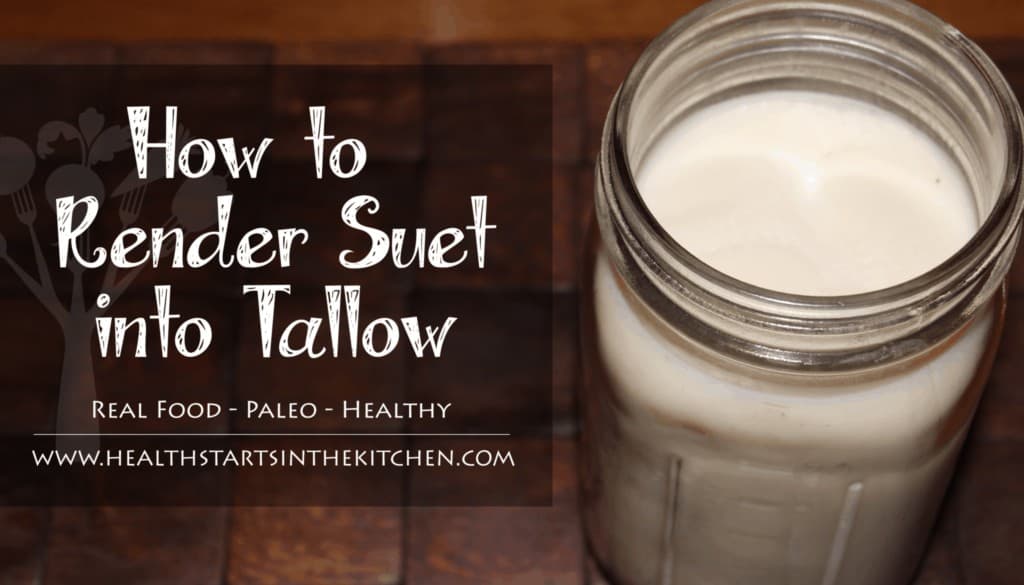How to Render Suet into Tallow

Rendering Beef Suet into Tallow is a very simple process. For most people the most difficult part is finding Grass Fed, Pasture Raised, Beef Suet. I always recommend buying from a local farmer, However if you are unable to find a local source you can buy quality Beef Suet to render online, Click HERE for where I recommend.
And just to remind you, I ONLY advocate the consumption of fat from cows that were raised exclusively on organic pasture, that have eaten only GRASS. Cows that have eaten grains are not healthy animals and thus are not healthy for us to eat.
Here’s How I Render Beef Suet into Tallow:
1. Coarsely Chop your Suet (solid beef fat)
2. Put your chopped suet into a large pot
3. Render your Suet over low/medium heat – You want to “melt” it low and slow to avoid burning your tallow.
4. After all the suet has melted, the leftover bits have browned and are floating on top of the liquid fat (at least an hour or longer) remove your pot from the burner to allow it to cool slightly.
5. Strain the browned bits from the liquid fat by straining your tallow through a colander lined with cheesecloth. (we scoop out the bigger bits first, just so it’s a little easier)

6. Transfer your liquid tallow to glass jars and allow to cool to a solid at room temperature.
7. Tallow will keep for a couple weeks at room temperature, for longer storage refrigerate or freeze. Frozen tallow will keep up to a year.












Thanks! Just made my first batch your instructions helped a lot. Please note however that not all “grass fed” beef is raised without antibiotics or growth hormone, nor is the forage they eat certified organic. (No pesticides on the plants they eat.) All certified organically grown beef is hormone, antibiotic, and pesticide free, including grain fed. Eating grains does not make their meat unhealthy, but eating non-organically grown grain does make it unhealthy, just as eating non- organically grown forage/grass does.
Also, most grass fed beef, (organic or not), eat more than just grasses, a properly managed pasture might contain non grass species such as clover, alfalfa, and brassica, among others. If you are looking to be pesticide, antibiotic, and hormone free in your diet, I suggest looking for the USDA certified Organic label rather than just what species of plants the animal has eaten.
The only way to know for sure how your food was grown/raised is to do it yourself! 2nd best option is to know your farmer and their farming practices. All other options are simply trusting a marketing label.
I have been rendering tallow to make soap and to really get all I can out of it I then use what is strained out to make suet balls. I have never had so many woodpeckers at my feeders!